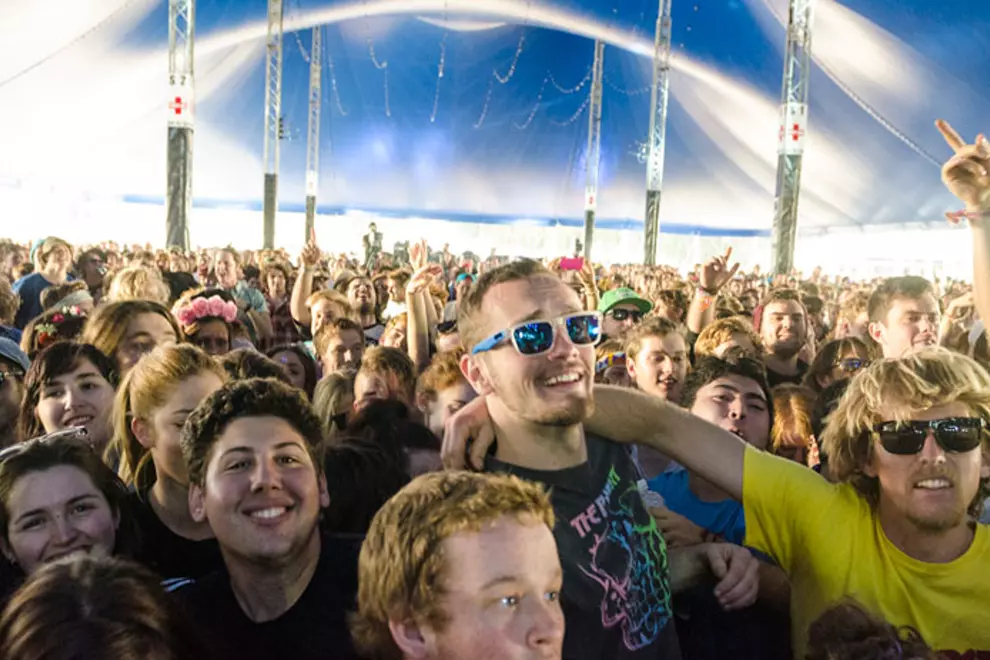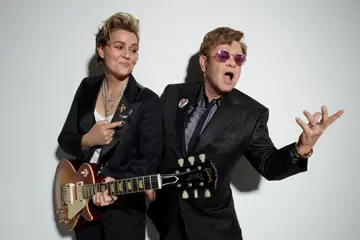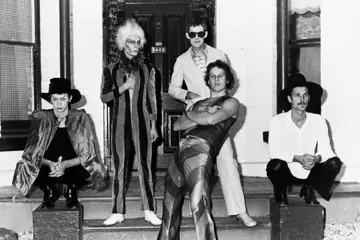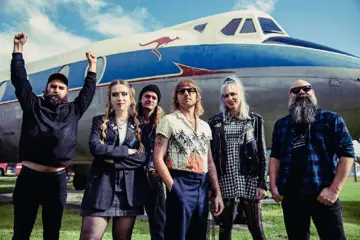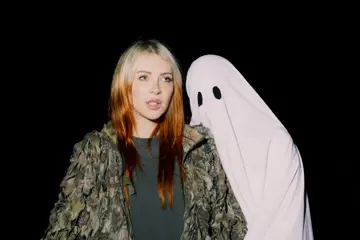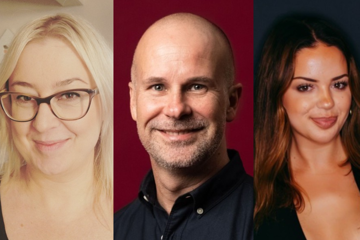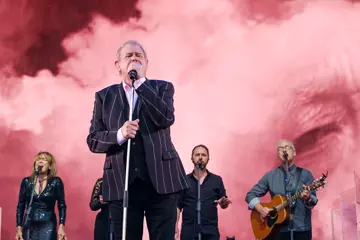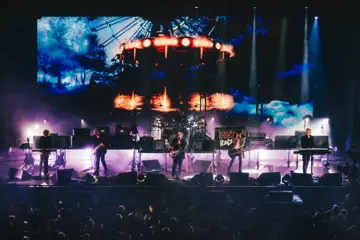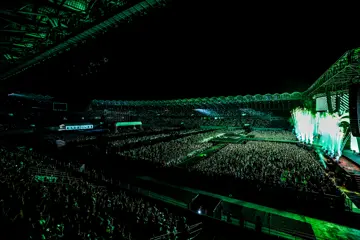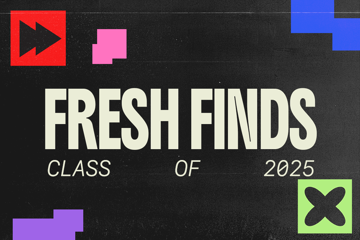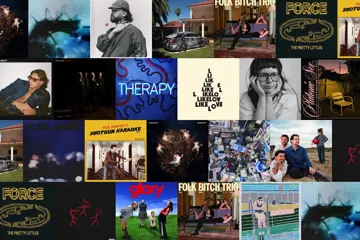 AC/DC
AC/DCAs AC/DC’s tour draws nearer, fans are making or buying devil’s horns, caps, school uniforms with red or blue tries and even plastic guitars to stick through their chests.
Some are refreshing their AC/DC tattoos, including those of Bon Scott inked over their entire backs.
Years ago, fans did tatts to honour their beast boys. But a new report, published last week by one of the world’s biggest promoters AEG, shows that Gen Z also go under the gun for another reason.
According to The Live Effect, today it’s just much about fanatics reminding themselves and others they are part of a community – one which gives them a sense of belonging and emotional connection.
Up to 70% “feel at home” among people who “get them” at live events. A high 63% feel an immediate connection with strangers there, and 53% feel understood by fellow fans in a way they can’t by people in their everyday lives.
In other data, 50% of fans strongly identify with the fan communities of their favourite artists. This figure rises to 65% among Gen Zs.
Close to 80% get a positive response from live events they can’t from digital encounters.
Don't miss a beat with our FREE daily newsletter
The AEG figures are based on UK music lovers. The report explains: “An unmatched sense of community, coupled with feelings of excitement (70%) and even euphoria (32%), keeps live music a priority amongst consumers
“Gen Z lead the superfan revival, with 41% dressing up and 12% even getting a tattoo as ways of connecting with their favourite artists and fellow fans.”
Metal
Metal followers are most likely to grind themselves (17%) followed by folk (16%) and K-pop (15%).
Last year, Chris O’Brien, GM of Destroy All Lines told The Music, “Heavy metal audiences are the most loyal; they are probably the most passionate fan base – as long as you provide them with strong, good value tours which are packaged well.
“They’re kind, they’re courteous and they’re well-mannered. They look after each other. If they fall over in the moshpit, they pick each other up. They buy their tickets early, they’ll spend thousands and thousands of dollars flying to different cities for the one tour. They’re there at the show for the music and not for any other reason.”
Destroy All Lines’ festivals include the hard rock Knotfest, Parkwave and Good Things, and O’Brien went on to explain that two regular concert and festival rites about headbangers are marriage proposals and fresh tatts.
“Proposing to your partner is a pretty life-defining moment, and to do that at a music festival or concert is something we don’t take lightly. The artists absolutely love it.
“With tattoos, many are certain song lines, more about what the song means to them, not just an artist’s name or an image.”
A Spotify study further found metal fans the most loyal. They live and dress the metal lifestyle, are most open to new experiences, need to be different, hostile to authority and least religious.
The AEG report goes on to explain about fan rites: “Not only does this behaviour identify them as part of the community, but it also leaves them with lasting mementos of some of their favourite experiences.”
A few years ago in a look at which acts inspired the most tattoos based on Instagram posts showing them off, BTS topped the list with 37,157.
Following were Pink Floyd (30,397), with Slipknot (22,015), Tupac Shakur (21,399), Nirvana (19,772), Iron Maiden (18,242), Rihanna (18,078), Wu-Tang Clan (17,000), David Bowie (16,075) and Metallica (14,584).
The most unique one was a New York fan of Mac DeMarco. She presented him with a jar filled with formaldehyde, and on a pig foetus, had tattooed a picture of him as a mermaid.
Songs
Taylor Swift’s Long Live. Lady Gaga’s Applause. BTS’s Magic Shop. Eminem’s Stan. AC/DC’s For Those About to Rock (We Salute You). Oasis’ Right Here Right Now. Kings Of Leon’s Fans. Slipknot’s Pulse Of The Maggots.
These are just a few songs about fans that go that extra mile… and we got quite a few examples of that last week.
If Swifties weren’t ordering eight different formats of Swift’s The Life Of A Showgirl, they had risen at 5am last Friday for fan-generated events across Australia to hear the new album in a cinema adorned in hair glitter, feather boas and friendship bracelets.
Then at 5am the next day they were queuing for the premiere of the movie of the same name set to generate a global US $50 million (AU$75.7 million). As they explained, it made more sense to share the experience with the community.
Meantime, as Kylie Minogue jetted back into the country, Sydney barista James Traill, 45, told the Sydney Morning Herald that catching Kylie Minogue concerts around the world and forking out for merch and VIP packages over the years ran into thousands and thousands of dollars.
“I don’t like to think of the amount of money I’ve spent on Kylie tours and merch; it probably amounts to a deposit on a flat,” he suggested.
A Harry Styles Manchester follower who released videos advising other Stylers where to get cheap versions of his stage gear to wear at his concerts, generated 1.5 million views.
Brat
The AEG report mentions the strong bond Taylor Swift and Oasis have with their crowd. It goes on to reveal that three in 10 (29%) wear clothes like Brat green at Charli XCX shows, bald caps at Pitbull’s and cowboy hats at country music festivals. It identifies them as part of a fan community.
That figure rises to 41% with Gen Z and 33% with Millennials. This is particularly so with fans of K-Pop (40%), metal (37%) and country (33%).
Gen Z are happy to take one step further. One in five (21%) make signs at home to get the attention of the stars.
Some take it further than buying music and merch. K-Pop outfit BTS’s fanbase, ARMY, organise extensive social media campaigns, help break streaming records with concerted first week of sales attention, and donate to charities under the BTS name.
When Taylor Swift was involved in a legal row over ownership of her music, Swifties’ campaign of boycotts and keeping the issues in the media. They played a role in the singer’s success,
An English fan who said Miley Cyrus’ lyrics helped him through a bad time, thanked her by spending £500 (AU$ 1,018) inking 15 tatts of her on his body. “I am hoping that Miley’s agent will hear about me via Twitter, and then she will pass the message on to Miley,” he said.
Superfans also told the AEG report 16% have queued overnight or over five hours for tickets or entry, and 15% have called in sick to work.
Paul Samuels, President – Global Partnerships at AEG International, added: “Live music brings people together like nothing else – and passionate Gen Zs are giving a whole new meaning to the word ‘superfan’.
“Throughout a busy summer of live events, we have seen fans embrace their shared love of specific artists and genres, with many going to extremes to make their experiences more memorable and mark themselves as part of fan communities.”
Release parties for the new album are being organised around the country, by people such as Brittany Ferdinands, who runs the Glitter Gel Pen book club, a reference to Swift’s more upbeat songs.
“We’re all dressing up, we’re making friendship bracelets and going through the songs one by one,” said Ferdinands, 32, a University of Sydney lecturer in digital content creation. “When we launched the tickets to our listening party, the tickets sold straight away. Being a Swiftie, you’re automatically accepted into this really welcoming, beautiful community.”
Swifties spent an estimated $66 million on merchandise alone during her Sydney ‘Eras’ dates, of which the star’s cut was $22.3 million.
There were scenes of queues of 1,000 each for seven merch stands, with wait times of up to two hours. The average spend was $1,300 each.
35%of the crowd was from around Australia or abroad. Some spent $10,000 attending every show because “that’s what Swifties do”.
Monetise
Any discussion about Superfans invariably ends up including their purchasing power, and how the music industry can monetise their obsession.
The music industry has learned from games players who spend big on their passions.
Spending on live entertainment ranks third for superfans, says AEG, after holidays and hobbies. 55% of Millennials will spend on live music even in tough economic times.
Only 22% of Superfans would drop live entertainment, and that after dropping luxury grocery items, dining out, fitness memberships and international holidays.
Western promoters and labels have learned from their Eastern colleagues that money is not just spent at artist-fan activities.
Also lucrative are events where fans of an act meet up at a club night or fan made exhibitions based on the images and lyrics of their heroes, or limited edition merchandise sales, coinciding with the star’s concert or album launch event.
Universal Music Group is working on products and experiences, noting, “Superfans, the most avid 20% to 30% of all music listeners, once drove more than 70% of recorded music spending.”
Spotify’s upcoming Music Pro tier will cater for superfans (in then US it will cost $5.99 a month more than a Premium) with early access to concert tickets and better seats, as well as AI-powered remix tools and enhanced audio quality.
Aside from Spotify, Live Nation last year also began talks with Apple and Amazon about presale ticket access for super-premium subs.
This April, Warner Music Group issued a beta version of its long-awaited superfan app, with advice and feedback from Ed Sheeran. At this stage the commercial version has no release date and what features.
Warner Music Group CEO Robert Kyncl earlier revealed, “I’ve assembled a team of incredible technology talent from Google and Stripe and Instacart and lots of other great technology companies who are working on a superfan app, where artists can connect directly with their superfans.”
The market opportunity for superfan monetization in recorded music was estimated by finance giant Goldman Sachs at USD $4.5 billion (AU$6.8 billion) in 2024. By 2035 it will be US$6.6 billion (AU$9.97 billion).
Apps
Not surprisingly, two Asian apps are leading the way in tapping opportunities, both with a global view, and both available in Australia.
Weverse, mobile app and web-based platform from K-pop company HYBE, launched in July 2018 with 152 acts. In 2024 it got 150 million downloads with 10 million monthly active users.
It connects artists and fans for AU$40 a year for benefits such as exclusive content, advance announcement from idols, direct messaging, live streaming, as offline access to music, and ad-free higher quality video streaming.
In April came a Spotify-powered service called Listening Party, where artists and fans listen to curated playlists together and chat in real time. Digital membership also allows offline content saving and real-time translation in 13 languages.
Direct messaging really slammed home. Last year, artists sent 698,000 messages and fans responded with 96.36 million messages. Over half the artists (55%) sent direct messages to fans at least every two days. The app’s cut is between 30% and 60%.
In its last financial report covering 2024, the company revealed a 19% user growth, the number of artist communities on the platform growing 30% year on year (YoY) to 162, and 4.88 million digital Fan Letters sent.
Weverse Shop sold 20.6 million items of physical and digital merch, respectively 10% and 24%. Most in-demand were artist memberships.
Its real-time video feature, Weverse Live, had 11.25 million viewers. There were 426 million total views of 5,787 broadcasts streams totalling 4,779 hours of content.
It is very much a global business, Aside from K-Pop names from 130 record labels (including its own superstars BTS who have 25 million followers on the platform), it has international artists as The Kid LAROI, Ariana Grande, Dua Lipa, Megan Thee Stallion and Conan Gray.
President Joon Choi said, “One of the most interesting parts about Weverse is that 90% of our traffic comes from regions outside of Korea, which means that most of our users are global superfans.”
App users are from 245 countries, with double-digit growth in North America, Europe and Asia.
It has come under the gaze of the Government for complaints about defective merchandise, delays in delivery, and violations of refund policies. But Weverse is accepted as a valid money-making model by the global record industry. Universal Music Group has a stake in Weverse.
Launched as its rival in March 2025 was Kakao Entertainment’s cutting edge global fan platform Berriz (pronounced Berries). It is high on fan interaction and sharing of K-Pop, Korean drama, online TV shows, musicals and e-novels incorporating AI, commerce and livestreaming and through 18 languages.
Solo artist Jung Seung-hwan and K-Pop group KiiKii were early stars. Kakao’s TV series Crushology 101 around a college student and her boyfriend encounters. By mixing different formats, it got 170 million accumulated views.
“Despite having different sizes and shapes, berries become sweeter when they are put together,” Kakao Entertainment said at its launch. “Like berries, Berriz will establish its presence as a playground where K-culture fandoms worldwide can communicate and discover joy together beyond genres and scopes.”

